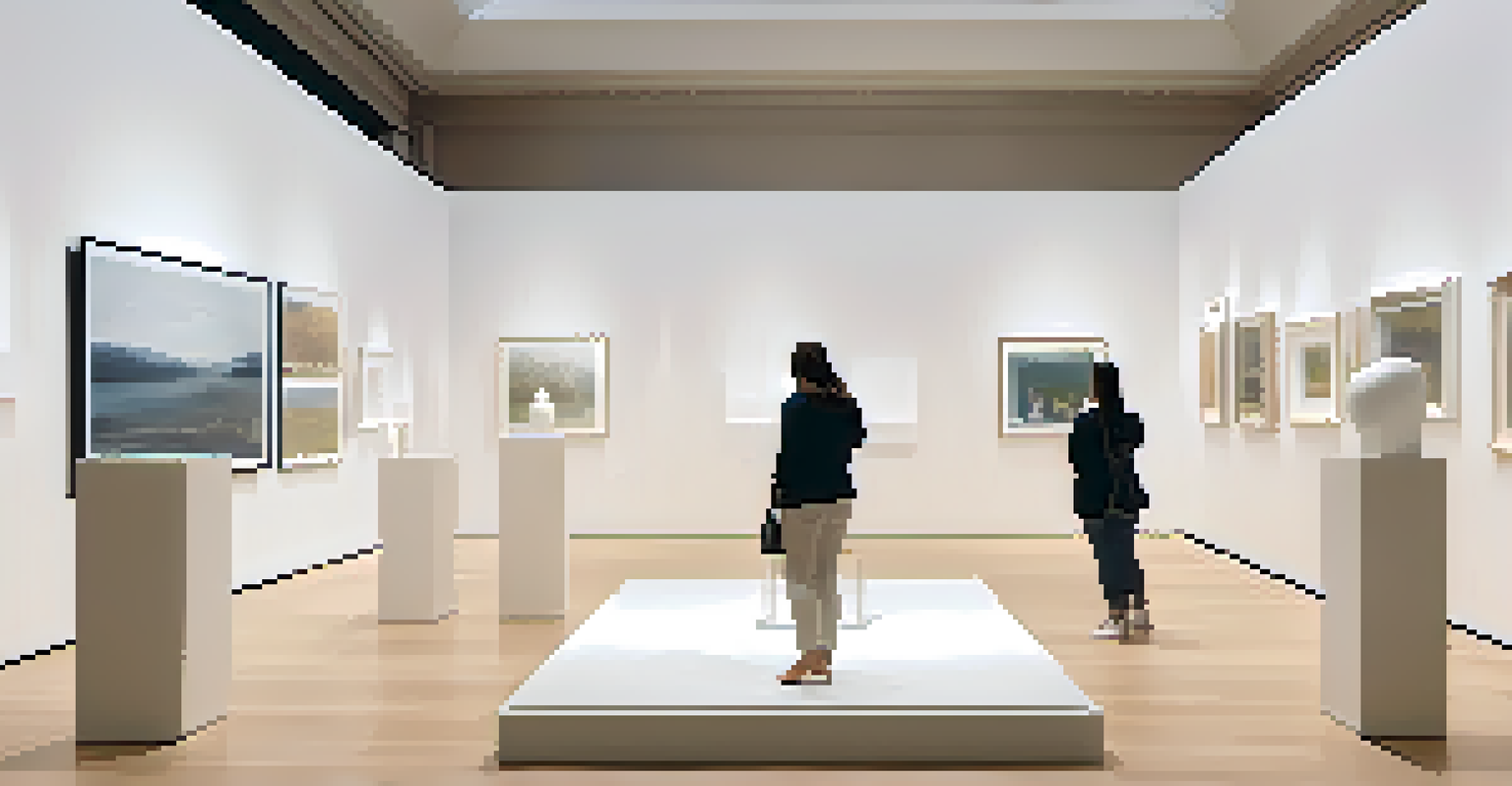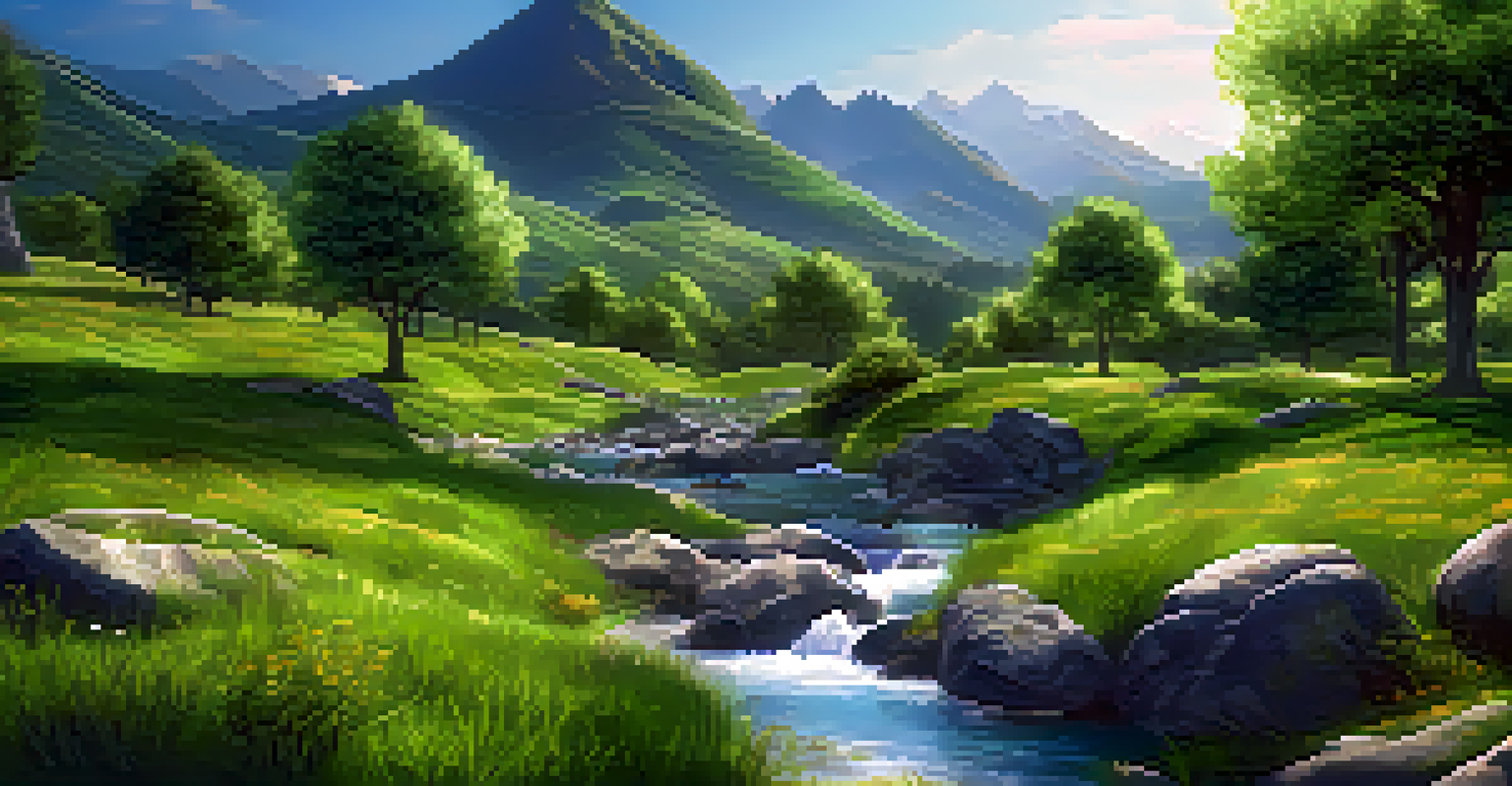Using WebGL for 3D Visualizations in Creative Coding

Introduction to WebGL and Its Capabilities
WebGL, or Web Graphics Library, is a powerful tool that allows developers to create 3D graphics directly in the browser. This means no need for plugins or special software; just a modern web browser is enough to showcase stunning visuals. It leverages the capabilities of the GPU, or Graphics Processing Unit, to render complex scenes efficiently, making it ideal for graphics-intensive applications.
The computer is a tool, and the artist is the one who makes it sing.
With WebGL, the possibilities for creative coding are virtually limitless. Artists and developers alike can generate intricate visualizations, animations, and interactive experiences that captivate users. Think of it as a canvas where you can paint in three dimensions, bringing your ideas to life with vibrant colors and mesmerizing shapes.
Moreover, WebGL integrates seamlessly with other web technologies like HTML and JavaScript. This makes it accessible to anyone with basic coding skills, encouraging a new wave of creativity and innovation in web design. Whether you're an artist, a game developer, or just curious, WebGL opens up a world of 3D creativity.
Getting Started with WebGL: A Beginner's Guide
To dive into WebGL, you first need a solid grasp of JavaScript and understanding of how the HTML5 canvas works. The canvas element serves as a blank slate for rendering graphics, and with a few lines of code, you can begin drawing shapes and colors. It's like learning to sketch; once you master the basics, you can create more complex designs.

Many libraries, such as Three.js and Babylon.js, simplify the process of working with WebGL. These libraries provide pre-built functions and features, making it easier to create 3D models, animations, and scenes without starting from scratch. They act as a helpful guide, reducing the steep learning curve often associated with 3D programming.
WebGL Enables 3D Graphics in Browsers
WebGL allows developers to create stunning 3D graphics directly within modern web browsers without the need for additional plugins.
As you start experimenting, it’s essential to engage with the community and resources available online. Tutorials, forums, and documentation can provide invaluable insights and tips that enhance your learning experience. Remember, every expert was once a beginner, so don't hesitate to seek help or share your journey.
Creating Interactive 3D Visualizations with WebGL
One of the most exciting aspects of WebGL is its ability to create interactive experiences. By incorporating user input, such as mouse movements or keyboard presses, you can make your visualizations respond dynamically. Imagine a 3D model that rotates or changes color as you move your mouse; it's engaging and invites users to explore more.
Technology is best when it brings people together.
Interactivity can transform a static visualization into an immersive experience. For instance, you could create a virtual art gallery where users can walk around and interact with each piece. This element of engagement not only captivates users but also elevates the overall impact of your work.
To implement interactivity, you'll often rely on event listeners in JavaScript that detect user actions. These listeners can trigger animations or changes in the 3D scene, enriching the user experience. The key is to keep it intuitive and enjoyable, allowing users to feel like they’re part of the artwork rather than just observers.
Enhancing Performance in WebGL Applications
Performance can be a crucial factor in the success of your WebGL project, especially when dealing with complex scenes. Optimizing your code ensures smooth rendering and interaction, which is vital for retaining user engagement. Techniques such as reducing the number of polygons in models or using simpler textures can significantly boost performance.
Additionally, leveraging techniques like frustum culling can help by only rendering objects visible to the camera. This process minimizes the workload on the GPU and enhances the overall responsiveness of your application. It's akin to decluttering your workspace; a cleaner environment often leads to better results.
Interactivity Enhances User Engagement
Incorporating user input in WebGL visualizations transforms static scenes into immersive experiences that invite exploration.
Remember to test your application across different devices and browsers. Performance can vary greatly depending on hardware capabilities, so it's important to ensure your visualization runs smoothly everywhere. By focusing on performance, you can create a more enjoyable experience for all users.
Leveraging Libraries for Advanced Features in WebGL
While WebGL provides the foundation for 3D graphics, libraries like Three.js can unlock advanced features that elevate your projects. These libraries come packed with utilities for lighting, shadows, and physics, making it easier to create realistic and captivating visuals. They serve as powerful tools in your creative coding toolkit.
For instance, Three.js allows you to implement complex lighting effects that can dramatically change the mood of your scene. A well-lit environment can enhance depth and highlight details, while shadows can add a layer of realism that draws users in. These effects can be compared to stage lighting in a theater, setting the scene for a more immersive experience.
By incorporating libraries, you can save time and effort, allowing you to focus more on creativity rather than the nitty-gritty of 3D rendering. This approach can lead to quicker iterations and more refined outcomes, enabling you to push the boundaries of what’s possible in your visualizations.
Best Practices for Creative Coding with WebGL
As you embark on your creative coding journey with WebGL, it's essential to follow some best practices to ensure success. First, always prioritize clarity and organization in your code. Well-structured code not only makes it easier to debug but also allows others to understand your work, fostering collaboration and feedback.
Next, consider accessibility in your designs. Not all users will interact with your visuals in the same way, so it's vital to create experiences that are inclusive. Providing alternative ways to engage, such as keyboard navigation, can make your work more accessible to a broader audience.
Libraries Simplify WebGL Development
Using libraries like Three.js can streamline the creation of complex 3D graphics, allowing developers to focus on creativity rather than technical details.
Lastly, keep experimenting and learning. The world of creative coding is ever-evolving, with new tools and techniques emerging regularly. Staying engaged with the community, whether through online forums or local meetups, can inspire you to push your creative boundaries and continually improve your skills.
Future Trends in WebGL and Creative Coding
As technology continues to advance, the capabilities of WebGL will likely expand, opening up new avenues for creative coding. Emerging trends such as virtual reality (VR) and augmented reality (AR) are beginning to integrate with WebGL, enabling even more immersive experiences. This integration could revolutionize how we interact with digital content.
Moreover, as web standards evolve, we may see improvements in performance and ease of use for developers. Imagine being able to create complex 3D environments with even less code; this could democratize creative coding, making it accessible to even more people. It’s akin to giving artists a broader palette of colors to work with.

Ultimately, the future of WebGL is bright and full of potential. As more creators explore its possibilities, we can expect to see innovative applications that redefine our relationship with technology and art. Whether you’re just starting out or are already experienced, now is the perfect time to jump into the world of WebGL and creative coding.